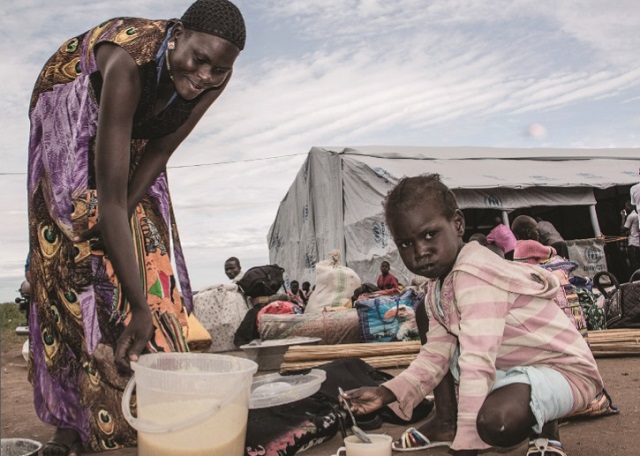
Why President told world leaders not to undervalue his hospitality
Kampala, Uganda |Ronald Musoke| When President Yoweri Museveni successfully convened a meeting of world leaders in Kampala for the first ever UN-backed Refugee Solidarity Summit on June 22-23, his mission was half accomplished.
Top on the summit agenda was how to raise US$2 billion every year for the next four years in order to respond to the looming humanitarian challenge of catering for 1.2 million refugees in a poor country.
The summit attracted Presidents Ali Bongo Ondimba of Gabon, Edgar Chagwa Lungu of Zambia, Mohammed Abdullahi of Somalia, South Sudan’s Vice President, James Wani, Belgian Deputy Prime Minister, Alexander De Croo, and representatives and dignitaries from the United Arab Emirates, China, Kenya, Tanzania, the United Kingdom, Iceland, Sweden, Japan, Germany and Ethiopia, among others. By the time the summit closed, about $358 million was raised by over a dozen countries. Was that success or failure?
Antonio Guterres, the UN Secretary General said $358.2 million was a good place to start.
“To have a starting figure of $358million plus the commitments of the World Bank and the African Development Bank is a very good start,” he said. But some remain skeptical.
Uganda is at the moment facing the world’s fastest growing refugee crisis, thanks to a continuous and a record influx of people fleeing conflict in neighbouring South Sudan, Burundi and the Democratic Republic of Congo.
It hosts more refugees than any other country in Africa while continuing to keep its borders open to those fleeing conflict or persecution.
Uganda’s progressive policy allows refugees to obtain a plot of land, start businesses, access healthcare and education and move freely. It allows people the opportunity to rebuild their lives close to their home country.
Yet, although Uganda hosts about 50% of all South Sudanese refugees anywhere in the world, the humanitarian organisations have until now been funded to the tune of 17% leaving behind a big funding gap of up to 83%.
The UN refugee agency says the South Sudan refugee response plan requires about $283 million this year but by May, only $85.8 million had been received.
On the other hand, the Burundian refugee response plan is to the tune of $55.3 million but there were no funds received by the UN agency by May, 2017.
Overall, the UNHCR Uganda operations require about $500.7 million in 2017 but by May, 2017, the UNHCR had received about $123.7 million by May, 2017.
Money is still not enough.
For instance although the UN’s World Food Programme says it has doubled its operations in the last year, the agency has only managed to meet the needs of the newest arrivals every month “by the skin of its teeth.”
It costs WFP $19 million every month to feed around one million refugees. The agency noted in its recent report that it urgently needs $63 million for the next six months to meet the refugees’ basic food needs.
With close to 1.3 million refugees living in over a dozen settlements across the country, Uganda is now the top refugee hosting country in Africa with the biggest number of asylum seekers coming from neighbouring South Sudan (950,000), followed by the Congolese (220,000) and over 37,000 Burundians as well as thousands from other countries in the region like Somalia.
According to the United Nations High Commission for Refugees (UNHCR), there were 1,277,476 total refugees and asylum seekers in the country according to a fact sheet released on June 20 and of these 950,562 were South Sudanese.
Most of these refugees are now living in the Bidibidi settlement (272,206), followed by Palorinyi settlement (171,728), Imvepi (107,330), Rhino (86,770) in West Nile and Lamwo (26,514) in the Acholi sub-region.
The UNHCR says Uganda took in more refugees each day in 2016 than many wealthy European countries received the entire year and both the Ugandan government and the UN spent close to $150 million each to help refugees settle in 2016.
In the first 14 days of June, over 280,000 South Sudanese arrived in the country, according to a UNHCR fact sheet seen by The Independent.
The north-western districts of the country seem to be soaking the biggest pressure from the refugee arrivals with Yumbe (272,707), Arua (198,053), Adjumani (224,343), Moyo (171,728) and Lamwo (23,838) playing the biggest hosts.
About 60% of the refugee population is made up of children under 18 while 86% of the population comprises women and children. The UNHCR says only 2% are elderly.
 The Independent Uganda: You get the Truth we Pay the Price
The Independent Uganda: You get the Truth we Pay the Price



If 60% of the refugees are children then 40% or close to 500,000 are adults who may be registered as “Ugandans” and made to vote for President Museveni in 2021.
Refugees in Uganda are another minerals found in Uganda. It is an opportunity for the government to milk money from the International Community.